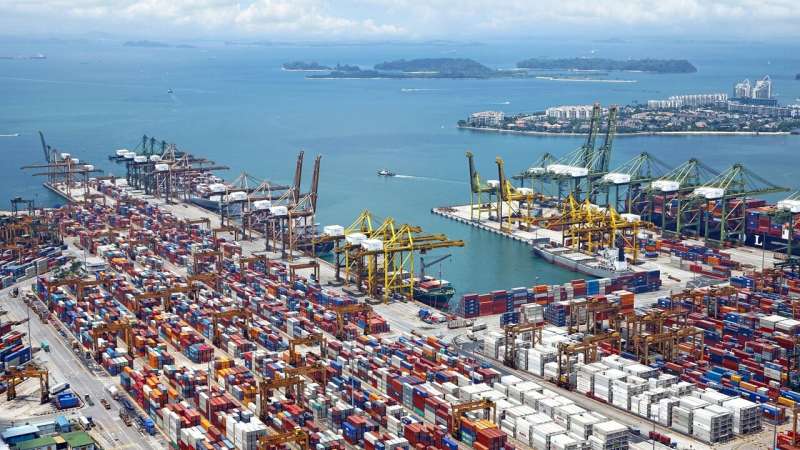This article has been reviewed according to Science X's editorial process and policies. Editors have highlighted the following attributes while ensuring the content's credibility:
fact-checked
trusted source
proofread
Machine learning in the maritime environment

A study in the International Journal of Shipping and Transport Logistics addresses a longstanding gap in the world of dry bulk shipping terminals, introducing a two-stage methodology that employs unsupervised machine learning techniques. The work by Iñigo L. Ansorena of the Universidad Internacional de La Rioja in Spain, focused on North European dry bulk terminals, and could improve transparency in terminal management.
Dry bulk terminals are specialist shipping facilities within a port or harbor that are designed for the handling and storage of dry bulk cargo, such as unpackaged goods shipped in large quantities like grain, coal, ore, cement, and fertilizers. These terminals play a crucial role in allowing commodities to be moved from ship to other modes of transportation such as road and rail, and other maritime vessels for onward distribution.
Ansorena looked first at terminal performance by identifying associations between various operational variables. This is achieved through the application of association rules, offering a detailed understanding of how different factors impact terminal operations. In the second stage, he used an isolation forest algorithm to calculate anomaly scores for each vessel using the terminal.
He points out that those vessels with scores exceeding 60% are flagged as anomalous and so their activities can be investigated further to identify issues in the services provided by the terminal and whether those problems are attributable to the terminal operator in the first place. This dual approach to assessing a terminal could be used to improve practices and also guide better contractual agreements between shipping companies and terminal operators in the future. The work underscores how machine learning techniques can be used in unusual contexts for analysis.
The research focused on dry bulk terminals in a specific region, but the same methodology has potential to be used elsewhere and for shipping terminals with different kinds of layouts and operational procedures. Indeed, the adaptability of this methodology is its strength for such analyses and could be used in a wide variety of context to improve logistics management.
More information: Iñigo L. Ansorena, Service anomaly detection in dry bulk terminals: a machine learning approach, International Journal of Shipping and Transport Logistics (2023). DOI: 10.1504/IJSTL.2023.134736














